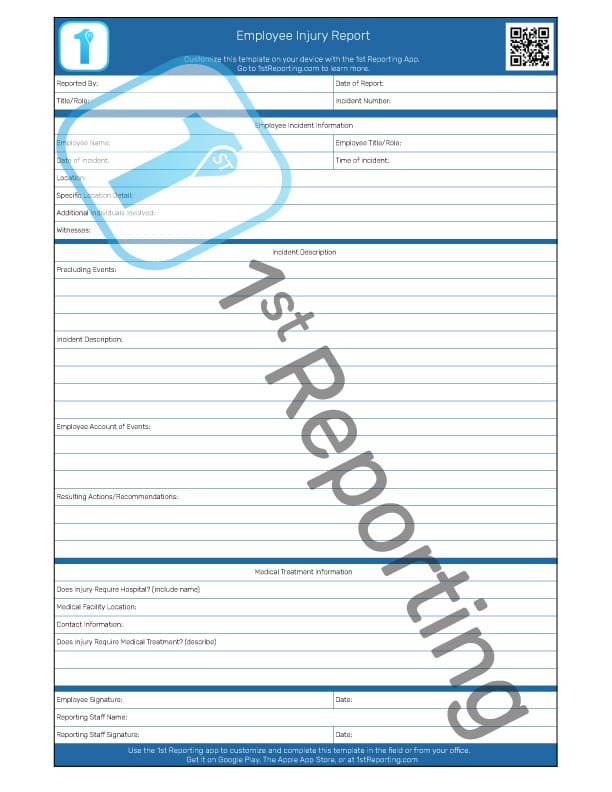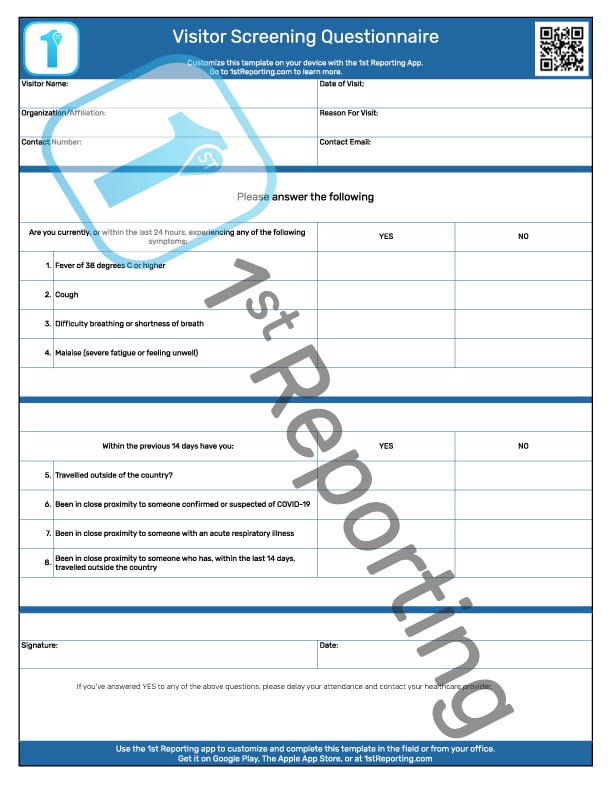
Determining a reasonable suspicion of an employee under the influence of drugs in the workplace can seem like a challenging aspect of your drug-free workplace health and safety program. Yet, it is essential to maintain proper health and safety standards that massively impact your business operations.
Utilizing an Employee Reasonable Suspicion Observation Checklist is a beneficial solution to the problem of reasonable suspicion determination. The form provides the basis for creating a uniform procedure within your organization that coincides with your health and safety policies.
Simultaneously, using a tiered investigative approach involving management maintains fair and equal processes across your entire employee base. It, in turn, corresponds with fair and equal treatment, which will help improve employee culture, productivity, and safety.
Let’s dive into a sample reasonable suspicion checklist to witness a potential course of the investigation and how it might find documentation within your organization.
Included In The Employee Reasonable Suspicion Observation Checklist
In suspicion of impairment incident, it is vital to impartially assess and document any observations that provide evidence of the impairment. Within the employee reasonable suspicion observation checklist, the observer can quickly record observations about the employee in question.
At the beginning of the Employee Reasonable Suspicion Observation Checklist, we’ll call it the ERSOC moving forward for simplicity. The primary incident information is recorded, including the employee’s name, position, date, and time of observations.
The following four sections of the ERSOC form contain the quick-check observations. These reasonable suspicion indicators comprise four groups:
- Physical indicators
- Speech indicators
- Behavioral indicators
- Performance indicators.
If any witnesses were present for any of these indicators, the following section provides an area where those observers’ names and positions can be recorded.
Before the sign-off section of the reasonable suspicion checklist, there is a final area where one may record further observations, comments, or notes. It may include, but is not limited to, additional witnesses or other observations not noted previously in the checklist.
How To Use The Employee Reasonable Suspicion Observation Checklist
The use of observational reporting incident forms is nothing new. But utilizing an impairment suspicion observation form within the workplace comes with its grey areas in terms of legal service. Always check with your local and state laws when observing employee rights concerning suspicion of impairment within the workplace.
When reasonable suspicion of drug or alcohol use not following company drug-use policies manages to occur, it is essential to document the incident as much as possible. The sensible suspicion checklist allows you to do just that – to record information involving an employee’s potential impairment.
Using the checklist, a manager or supervisor may begin the observational list by completing the sections provided. If an employee is acting in an unsafe, violent, or otherwise harmful manner, the observer should communicate the observations with the appropriate management level within your organization.
Providing a procedure for using the reasonable suspicion checklist within your organization is imperative to the success of a fair and organized drug-free workplace policy.
Benefits Of Procedurizing Employee Reasonable Suspicion Reporting

Whenever a manager or supervisor feels there are grounds to be suspicious of an employee breaking drug-use policies in the workplace, it opens the door for potential situations an employer typically strives to avoid. That said, it is of benefit to formulate a standardized procedure for the inclusion of fairness across all organizations.
Primary benefits to a procedure for documenting reasonable suspicion include:
- Fair treatment of all levels of employees within an organization
- Ease of incident reporting process for observing individuals increasing efficiency
- Standardization allows for rapid deployment and scaling
- Increased staff awareness of health and safety drug-related policies with process inclusion of refresher training for all employees
Numerous other benefits include increasing the efficiency of your organization’s processes. It does not end at merely reasonable suspicion observations but can extend to incident reporting in general, building maintenance inspections, and more.
By eliminating administrative processes embedded within a traditional reporting infrastructure, we can automate a great deal of the process, allowing exponential efficiency increases within day-to-day operations. Let’s take a look at a few tips we have for the process in general.
Tips For Efficient Reasonable Suspicion Reporting
- If it is believed that the employee is a danger to themselves or others, they should be stopped from continuing work to avoid an incident.
- If vehicles are used within your organization, especially those that travel on public roadways, make sure your managers have appropriate training per regulation 49 CFR 382.603 of the Department of Transportation. Typical training takes 120 minutes and teaches managers how to identify the symptoms of drug and alcohol use. See the U.S. Department of Transportation Supervisor Training Guidance document here for further information.
- Questioning employees about the use of drugs or alcohol should always accompany the use of an employee reasonable suspicion form or checklist for recording the observations that led to reasonable suspicion of the employee. Documentation is always a priority to managing these situations.
- Be impartial when reporting the observations.
- Create a clear and concise drug-use policy as a part of your standard health and safety policy. Ensure all employees are well aware of the company drug policy.
- Consult local, state, provincial, or territorial laws to understand your rights as an employer and how and when an organization might complete drug testing requests with employees whom reasonable suspicion has been observed.
- Generally speaking, US employers have to create their drug policy unless in an industry federally mandated to require drug testing procedures. So, make sure you include a policy within your organization.
- If your company has more than one employee and operates a vehicle that requires a CDL on public roads, it’s the law that your company has the DOT Supervisor Training (USA). You can find out more about your organization’s requirements with the DOT regarding drugs and alcohol here.
- Forgo a traditional downloadable and printable form or checklist and implement a digital mobile solution. Let’s talk a bit more about this one; it can save your company a lot of time and money through automating traditional processes.
Use A Digital Reporting Platform
We’ve created a digital download checklist you can easily download and print. However, if you’re looking for more of a digital solution, you should consider the 1st Incident Reporting app.
The solution is found on both Google Play and Apple App Store. With a digital solution like this, you can implement standardized regulations, policies, and communications by virtue of the platform’s abilities. For example, when a reasonable suspicion checklist is completed using our application, an instant notification can be sent to any specific manager or supervisor that you would like. Using technology to automate procedural steps allows employees and management to focus on the tasks that provide value to an organization, rather than the remedial tasks of forwarding documentation as an example.
The elimination of multiple process steps through automation increases organization efficiency. It also eliminates the possibility of error within the system. For example, losing a report that is in transit from one manager to another. A break in the chain of paper document processes can disrupt an entire operation. When the solution is digital, the chain is not only intact; it also occurs in a fraction of the time it would otherwise.
Sending reports instantly and having access to those reports, checklists, or documents is vital in an organization’s ability to react at the moment to a situation. If there is a danger of an incident, then any company’s reaction time is directly relative to the potential threat’s resolution. An impaired employee who works with machinery, for example, requires immediate company attention and cannot wait a day or more for vital observations to find their way from the observer to the appropriate level of management.
With the 1st Incident Reporting app’s digital reporting solutions, management could have access to a reasonable suspicion checklist within seconds of its completion. You just can’t match that kind of reporting efficiency or flexibility.





